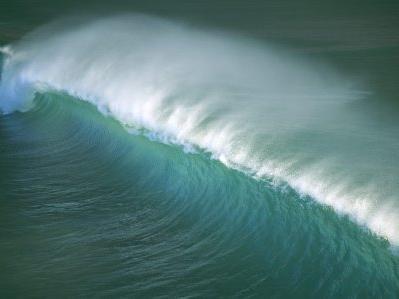Ocean Breeze: The Next Source of Renewable Energy? | |||||||

In a search for non-polluting sources ofenergy, the North American states of Rhode Island and New England are embarkingon projects to set up offshore wind farms, up to 30 miles off the East Coast ofthe United States. The move comes at a time when President Obama has justcleared exploration offshore of the American coast.
The wind energy project has definitebenefits, but critical to its implementation will be ensuring that the projectis cleared from an environmental as well as economic perspective, and is in thegreater public good.
Rhode Island has put potential sites undera three year scientific study, in order to study bird migration patterns,wildlife habitats, fish distribution and areas of cultural importance to NativeAmerican Indian tribes. Its goal has been to build a consensus and avoid thekind of conflict that the neighbouring state is facing, with businessinterests, coastal tribes and resident homeowners opposing the developer, CapeWind and supporters of the alternative energy movement.
Rhode Island has proposed two potentialoffshore sites — a $200 million eight-turbine project off Block Island, and afar bigger $1.5 billion farm in the eastern Rhode Island Sound — and hasselected a preferred developer, Deepwater Wind. It has also managed to sign apower purchase agreement with a utility company to buy the farm’s output.
Delaware, Maine, New Jersey, New York and Virginia are also eager to securepermits and to lease blocks from the federal government in waters beyond thethree-mile limit of state control. Some environmentalists are concerned thatthe offshore competition in the Northeast could trump the protection of fishand bird populations, affecting the ecology of the regions.
While environmental groups have generally praised Rhode Island’s planning asthorough, some question why state officials homed in on two sites before thethree-year study was completed. Mr. Fugate, the chief administrator of theRhode Island project and the director of the state’s Coastal ResourcesManagement Council has emphasized that the sites are tentative and could bevetoed if the research indicates that they have big drawbacks. Adjustments havebeen made as the research has progressed, he said.
With considerable economic stakes, the first offshore wind farm couldgenerate as much as 1.3 million megawatt hours of power in a year, which wouldlight up 125,000 homes and create over 600 jobs. In fact, the competition is sohigh that researchers involved with the project have been asked to keep some ofthe data secret.
The project has the potential to make or break the attempt to harnessoffshore wind power as a source of alternative energy, but the ecological andeconomic concerns driving the objective need to be addressed, in order to makeit a pathbreaker for other projects to follow.
Source:
http://www.nytimes.com/2010/04/03/science/earth/03wind.html?ref=business
Rhode Island has put potential sites undera three year scientific study, in order to study bird migration patterns,wildlife habitats, fish distribution and areas of cultural importance to NativeAmerican Indian tribes. Its goal has been to build a consensus and avoid thekind of conflict that the neighbouring state is facing, with businessinterests, coastal tribes and resident homeowners opposing the developer, CapeWind and supporters of the alternative energy movement.
Rhode Island has proposed two potentialoffshore sites — a $200 million eight-turbine project off Block Island, and afar bigger $1.5 billion farm in the eastern Rhode Island Sound — and hasselected a preferred developer, Deepwater Wind. It has also managed to sign apower purchase agreement with a utility company to buy the farm’s output.
Delaware, Maine, New Jersey, New York and Virginia are also eager to securepermits and to lease blocks from the federal government in waters beyond thethree-mile limit of state control. Some environmentalists are concerned thatthe offshore competition in the Northeast could trump the protection of fishand bird populations, affecting the ecology of the regions.
While environmental groups have generally praised Rhode Island’s planning asthorough, some question why state officials homed in on two sites before thethree-year study was completed. Mr. Fugate, the chief administrator of theRhode Island project and the director of the state’s Coastal ResourcesManagement Council has emphasized that the sites are tentative and could bevetoed if the research indicates that they have big drawbacks. Adjustments havebeen made as the research has progressed, he said.
With considerable economic stakes, the first offshore wind farm couldgenerate as much as 1.3 million megawatt hours of power in a year, which wouldlight up 125,000 homes and create over 600 jobs. In fact, the competition is sohigh that researchers involved with the project have been asked to keep some ofthe data secret.
The project has the potential to make or break the attempt to harnessoffshore wind power as a source of alternative energy, but the ecological andeconomic concerns driving the objective need to be addressed, in order to makeit a pathbreaker for other projects to follow.
Source:
http://www.nytimes.com/2010/04/03/science/earth/03wind.html?ref=business
No comments:
Post a Comment